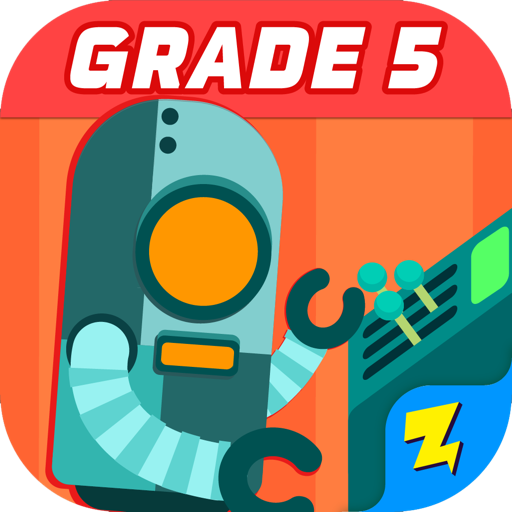
Brain Breaker, a side-scrolling platform-adventure game that is a part of Metroidvania's early genre, is an example of this. It was originally released on the Sharp X1 back in 1985. The game requires the player to line up 15 blocks in a sequence and solve a puzzle. Students can use this game to stay focused and on the task at hand.
Brainbreaker is a code-breaking game Brain Breaker.
Brain Breaker is a video-game based on Mastermind, a popular code-breaking game. It challenges players to decipher a code created randomly. It aims to increase students' problem-solving and cognitive thinking abilities. It encourages social interaction and physical activity. To solve the code, players are given eight chances to guess. Players will receive gold balls if they correctly guess the code. They will be awarded silver balls if they are not correct.
This code-breaking game is played between two players and is adjustable in difficulty. It may be easier for beginners to guess the codes. Experienced code-breakers might face repeated colors and empty holes. True brain teaser

This puzzle requires students to solve a sequence of 15 blocks
The Fifteen Puzzle is a popular European puzzle that was created in 1880. There are more than 20 million different arrangements of the blocks, and one blank block is left out. A pair of American mathematicians later proved that half of the initial arrangements admit a solution. They used the following mathematical analysis: Any number must pass through an even number of boxes.
It's a physical brainbreak
There are many benefits to taking a brain break. It gets your child out of their seat and gets the blood flowing. It helps you regain control over your child and improves their focus. Physical breaks are fun and are just as effective as meditative breaks. Here are four examples of physical brain breaks that you can introduce to your child.
You can walk or stretch. Both of these activities will improve brain activity. Exercise is known to improve attention and concentration. It is also proven that students can remember vocabulary words faster by exercising. Exercise helps you to reduce stress and makes it easier for you to focus on other tasks.
It helps students stay focused
Brain breakers are a great tool to help students stay focused. Brain breaks are a great way to help students manage their emotions, recognize when they're frustrated, and learn how best to deal with them. They are useful tools for students who struggle to finish homework. They can take a brief break and then return to the task with a fresh perspective and refocused. These brain breaks help build confidence and self-esteem. These brain breaks also teach students how to overcome problems in homework. This will make it easier for them to stay motivated to finish the assignment.

Brain breaks can help students increase their creativity and social skills. Students can sing or dance to focus. A break from school can encourage shy students to get out of their shells, and make them more outgoing. Students will be better prepared for class discussions if they have a break from studying. You will find that they are more open to answering your questions.
FAQ
What are the different types of early childhood education?
There are many ways to explain early childhood education. The most common ones include:
-
Preschool - Children ages 2 to 5
-
PreKindergarten- Children from 4-6 years of age
-
Head Start/Headstart for Children Ages 0-3
-
Day Care/ Daycares for children 0-5
-
Child Care Centers for Children from 0-18
-
Family Childcare - Children between 0 and 12 Years Old
-
Homeschooling – Children from KG up to 16
What is the difference between a college and a university
A university is an institution that offers higher education. It offers both undergraduate and graduate courses in many fields.
A college is usually smaller and less prestigious than a university. It may offer fewer courses but often has its own specialist departments.
How much does homeschooling cost?
There are no set fees for homeschooling. Some families charge between $0-$20 per lesson. Some families offer services for free.
But homeschooling is not easy. It requires commitment and dedication. Parents should be able to dedicate enough time to their children.
They need to have access books, supplies, or other learning materials. Many homeschoolers need to access community programs and events to complement their curriculum.
Parents need to consider costs such as transportation, tutoring, and extracurricular activities.
Homeschoolers also need to plan for field trips, vacations and special occasions.
What are some ways to get scholarships?
Scholarships can be granted to help cover college expenses. There are many types to choose from. These are:
-
Federal Grants
-
State Grants
-
Student Loans
-
Work Study Programs
-
Financial Aid
Federal grants come directly to the U.S. Federal grants usually require applicants to meet specific requirements. For example, you must demonstrate financial need.
Individual states offer state grants. These funds are offered by individual states based on financial need. Others offer money for specific purposes.
Student loans are issued by banks and other lending institutions. Students borrow money to pay tuition and other living expenses.
Employers can use work-study programmes to attract qualified students. Employers are required to pay employees at least minimum wage.
Financial aid covers the majority or all of the tuition costs for low-income families.
How do I select my major?
Students choose their majors based upon their interests. Students may choose to major in the subject they are most passionate about because it is easier than learning something else. Some people want to work in a field that has no job opportunities. Others decide to major because they want to earn money while studying. Whatever your reason, you should think about what type of job you would like to have after graduation.
There are many methods to learn more about the different fields of study. You could talk to someone in your family or friends about their experiences in these areas. Check out newspapers and magazines for possible careers. Talk with a guidance counselor at your high school to ask about possible careers. Visit the Career Services section of your local library. You can borrow books about various topics from the public library. Use the Internet to search for websites related to specific careers.
How much time should I devote to studying each semester?
The amount of time you study depends on several factors: 1) How important the course is to your degree program; 2) How difficult the course is; 3) Whether you've taken the course before; 4) Whether you've studied other courses during the same semester; 5) Whether you're taking more than one class per week; 6) Whether you have outside commitments; 7) Whether you're enrolled full-time or part-time; 8) Whether you have financial aid available to pay for school expenses; 9) Whether you're living at home or off campus; 10) Whether you're married or single; 11) Whether you have children; 12) Whether you're going to school part-time or full-time; 13) Whether you plan to graduate early or later.
You may be required to take certain classes annually by some schools. This means that you won’t be able to choose which courses you want to take in any given semester. Your advisor can help you determine which courses you should take in each semester.
Statistics
- They are more likely to graduate high school (25%) and finish college (116%). (habitatbroward.org)
- Globally, in 2008, around 89% of children aged six to twelve were enrolled in primary education, and this proportion was rising. (en.wikipedia.org)
- “Children of homeowners are 116% more likely to graduate from college than children of renters of the same age, race, and income. (habitatbroward.org)
- And, within ten years of graduation, 44.1 percent of 1993 humanities graduates had written to public officials, compared to 30.1 percent of STEM majors. (bostonreview.net)
- Among STEM majors, that number is 83.5 percent. (bostonreview.net)
External Links
How To
What is vocational education?
Vocational education is an educational program that prepares students to work after high school and college. It teaches them specific skills for specific jobs (such as welding). It also includes on-the-job training in apprenticeship programs. Vocational education is distinct from general education as it focuses more on training individuals for specific jobs than on learning broad knowledge that can be used in the future. The goal of vocational education is not necessary to prepare people for university study but to help them find jobs upon graduation.
Vocational education may be provided at all levels of schooling, including primary schools, secondary schools, colleges, universities, technical institutes, trade schools, community colleges, junior colleges, and four-year institutions. There are many schools that specialize in specific subjects, such as nursing schools (law schools), medical schools, dental school, veterinary medicine and firefighting schools. Many of these offer both academic instruction, and practical experience.
In recent decades, many countries have made large investments in vocational training. However, it is not clear if vocational education is effective. Some critics say it does not improve students' employability. Other argue that it prepares them well for life beyond school.
The U.S. Bureau of Labor Statistics has estimated that 47% of American adults hold a postsecondary certificate or degree related to their current occupation. This figure is higher among those with more education: 71% of workers aged 25-29 with a bachelor's degree or higher are currently employed in fields requiring postsecondary credentials.
According to the BLS in 2012, almost half of Americans had at the least one type of postsecondary credential. About a third of Americans were able to obtain a twoyear associate degree. Another 10% had a fouryear bachelor's. One fifth of Americans had a masters degree or doctorate.
For those with a bachelor’s degree, the median annual income was $50,000. This is compared to $23,800 if you don't have one. For advanced degrees, the median annual wage was $81,300.
The median wage for people who did not finish high school was only $15,000. The median annual income for those with less than a high-school diploma was $13,000